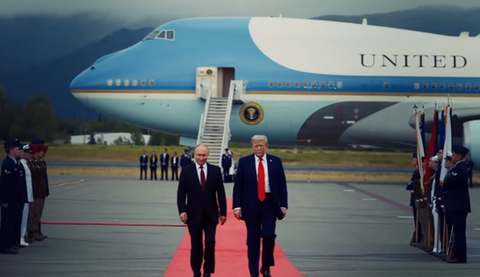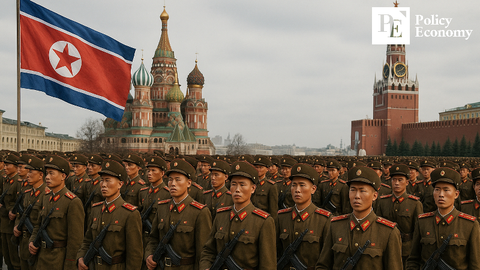Trump openly pressures Apple: “Increase iPhone production in the U.S., not India”
Input
Changed
Trump calls for iPhone production in the U.S. Opposes Apple’s expansion of manufacturing in India Emphasizes the need to build iPhone production facilities in the U.S.

U.S. President Donald Trump has reportedly expressed strong dissatisfaction with Apple’s expansion of production in India and directly demanded that the company increase manufacturing within the United States. His remarks draw attention as they may mark a turning point in Apple’s strategy to reduce reliance on China and strengthen its production capacity in India.
Trump: “I Want Apple to Build Factories in the U.S.; I’ve Been Patient for Years”
According to Bloomberg and other foreign media on the 15th (local time), President Trump recently spoke at an event in Doha, Qatar, where he referenced a conversation with Apple CEO Tim Cook. “I had a bit of an issue with Tim Cook yesterday,” Trump said. “I told him, ‘Friend, I’ve treated you very well. I heard you’re bringing $500 billion to the U.S., but now it turns out you’re building a factory in India. I don’t want you building a factory in India.’”
The $500 billion he mentioned refers to Apple’s previously announced investment pledge in the U.S. made in February.
Trump continued, “I told Tim, ‘Look, we’ve tolerated Apple building all of its factories in China for years. Now it’s time to build in the U.S. We’re not interested in you building in India. India will do just fine on its own — we want Apple to build factories here (in the U.S.).’” Although Trump said Apple would increase domestic production in response, he did not provide further details.

Perceived as a Way to Evade Tariffs
Trump’s comments go against Apple’s current trend of expanding manufacturing in India to reduce risks associated with China. Apple’s iPhone production in India recently surpassed $22 billion, up over 60% from the previous year. Nearly 20% of global iPhone production now takes place in India. Major suppliers such as Foxconn, Tata, and Pegatron are expanding their manufacturing bases in India to supply the U.S. market.
However, Trump appears to view this strategy as a way to circumvent tariffs, expressing displeasure. His argument — that Apple benefited from U.S. favors and must now boost domestic production — aligns with that stance.
Apple has, in fact, pledged to increase infrastructure investment in the U.S., planning to invest $500 billion over the next four years in manufacturing, R&D, data centers, and server facilities. Construction of a high-end server factory in Texas is also expected to begin in earnest this year.
Why Apple Sticks to Overseas Production
Nevertheless, Trump’s comments could be seen as a challenge to Apple’s global supply chain diversification strategy. While Apple is also expanding production of MacBooks and AirPods in Vietnam, fully shifting iPhone production to the U.S. faces serious obstacles — including high labor costs and parts supply issues.
Cheap labor is not the only reason Apple favors overseas production. A bigger factor is the flexibility, diligence, and technical skills of foreign workers.
According to a New York Times article titled “How the U.S. Lost Out on iPhone Work,” Apple executives have repeatedly emphasized the speed and scale of supply chains in Asia. For example, in 2007 — just six weeks before the launch of the iPhone — Steve Jobs ordered the replacement of the plastic screen with reinforced glass after scratches appeared when he carried his iPhone with keys in his pocket. The team contacted Corning Inc. in the U.S., but logistical and cost issues made large-scale production difficult. Meanwhile, a factory in China had already begun building new facilities and had a warehouse full of glass samples, along with the technical staff ready to conduct rapid testing.
In addition, assembly plant workers in China often work six days a week, 12 hours a day — a level of labor mobilization that’s nearly impossible in the U.S. Technical staffing is another major hurdle: manufacturing iPhones requires about 9,000 engineers to oversee and support 200,000 line workers. In the U.S., it would take nine months to recruit that many engineers, compared to just six months in China.
While the core product technology may originate in the U.S., Chinese labor is far more productive and skilled in the actual assembly and component manufacturing stages. As a result, Apple produces only a tiny portion of its products in the U.S., such as the Mac Pro. For iPhones, 90% of components are sourced from outside the U.S. Assembly is done in China, memory chips come from South Korea and Japan, chipsets from Europe, and display panels from South Korea and Taiwan.
Bloomberg concluded, “Fully assembling iPhones in the U.S. would be an extremely difficult task — even for Apple, with its deep cash reserves.” Some experts predict that if a U.S.-made iPhone were released, its base price could exceed $3,000.
Apple, meanwhile, is already using a "build-ahead" strategy — rushing shipments of India-made iPhones to the U.S. to avoid future tariffs. Still, with the 90-day U.S.–China tariff reprieve nearing its end, the outlook remains uncertain.





















